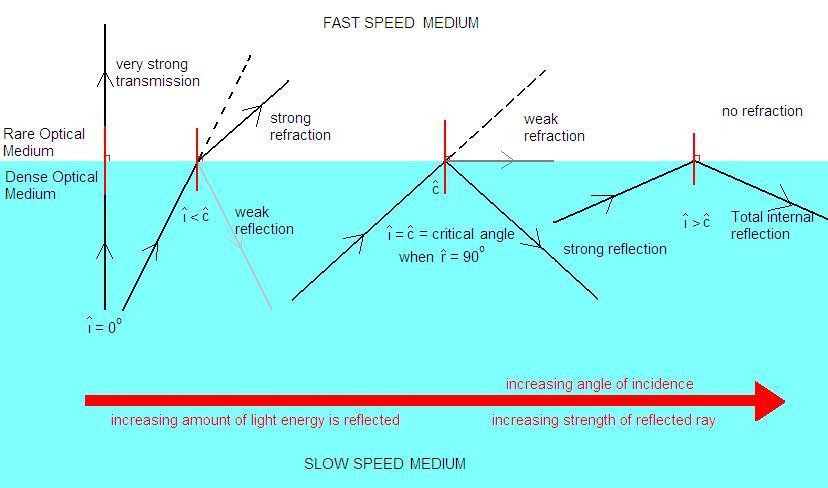Total Internal Reflection of Light and its Applications
Total internal reflection is referred to as the complete reflection of light rays within the given medium from the surrounding surface. Generally, the total internal reflection takes place at the boundary between two transparent mediums when the light ray in the medium of high refractive index is approaching the other medium whose angle of incidence is greater than the critical angle.

Specifications
The reflection of light is continued within the medium either glass or water, and there is no involvement of refraction. When the light ray is traveling in the denser medium and is entering the rare medium, then it is bending away from normal. If the angle of incidence is increased, then there is also an increase in the angle of refraction. At an instance for the particular value of angle of incidence, the angle of refraction is becoming 90 degrees. The angle of incidence that is causing the refracted ray, in the rare medium to bend through the 90 degrees is known as the critical angle.
Description and Examples
When the angle of incidence is becoming larger than the critical angle, then there is no occurrence of refraction. All of the light is reflected in the denser medium. This phenomenon is known as total internal reflection. The total internal reflection can only be observed when the light is passing from denser medium to rare medium, and when the angle of incidence is greater than the critical angle. Some common examples of total internal reflection of light are the reflection of turtle in underwater, the fish that is looking like water above the mirror, and the mirage image of any distant object. The glass prisms can be shaped for producing a total internal reflection.

Applications of Total Internal Reflection
- Total internal reflection of light has many useful applications in various optical instruments such as in binoculars, telescopes, periscopes, microscopes, and spectroscopes.
- The brilliance of a diamond is also observed due to total internal reflection. The sparkling, brilliant effects can be created in the diamonds by polishing with the total internal reflection.
- The working of optical fibers is also based on the principle of total internal reflection. The entrance of light through the glass of core fiber, from the one end in such a way that angle of incidence is greater than the critical angle, then the glass fiber suffers the total internal reflection for many times, and it is emerging out as divergent beam on the other end. This is the basic principle of optical fiber, that otherwise is not possible without the effect of total internal reflection.
- Based on total internal reflection the phenomenon of mirage can also be explained.
